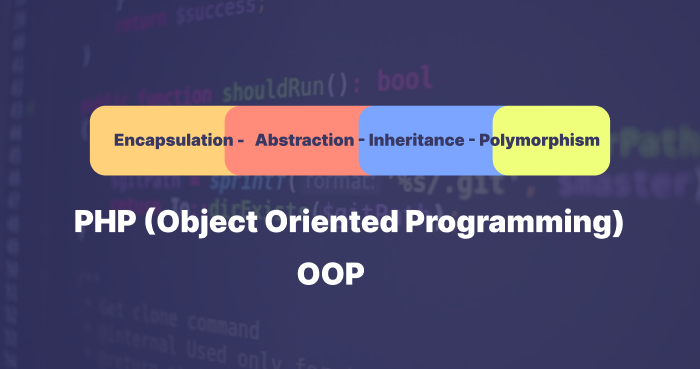PHP namespace solves the problem of name conflicts. Different developers may create functions-classes, or constants with the same name. PHP throws errors when duplicate names exist without namespaces. Here is what we will cover:
- What is a PHP namespace, and how does it work?
- How do you use multiple namespaces in one file?
- How to access namespaced classes and functions.
- Examples.
Let’s get started with the definition and its syntax.
What is a PHP Namespace?
A PHP namespace is a way to group related elements. It organizes classes and functions to avoid name conflicts. It helps organize code, especially in large projects with multiple libraries.
Here is its syntax:
namespace namespaceName;Let’s see a quick example:
// member.php
namespace FlatCodingProject;
class Member {
public function getName() {
return "FlatCoding Author";
}
}Here, FlatCodingProject is a namespace. It prevents conflicts if another Member class exists in a different namespace.
But, how do you use this namespace in another place?
You need to add the use keyword before the namespace name. Here is an example:
require_once 'member.php';
use FlatCodingProject\Member; // => Import the namespace
$member = new Member();
echo $member->getName();You can also use another alternative way:
require_once 'member.php'; // Include the file
$member = new FlatCodingProject\Member();
echo $member->getName(); Here is the output:
FlatCoding Author
The use keyword in PHP allows you to shorten the fully qualified class name. It makes the code more readable and easier to manage.
Let’s move on to the following section to understand how to use multiple namespaces in one file.
How to Use Multiple Namespaces in One File?
PHP allows defining multiple namespaces in a single file in two ways which are sequential namespaces and bracketed Syntax.
Let’s see each one in depth.
Sequential Namespaces
Each namespace is declared separately in the same file.
For example:
// First namespace
namespace FlatCodingProject;
class Member {
public function getName() {
return "FlatCoding Author";
}
}
// Second namespace
namespace AnotherProject;
class User {
public function getRole() {
return "Admin";
}
}
// Using the classes from their respective namespaces
$member = new \FlatCodingProject\Member();
echo $member->getName();
echo "\n";
$user = new \AnotherProject\User();
echo $user->getRole();Output:
FlatCoding Author
Admin
Bracketed Syntax (Not Recommended)
Encloses each namespace within {}.
Here is an example:
namespace FlatCodingProject {
class Member {
public function getName() {
return "FlatCoding Author";
}
}
}
namespace AnotherProject {
class User {
public function getRole() {
return "Admin";
}
}
}But here you need to use a global namespace to call them:
namespace {
$member = new \FlatCodingProject\Member();
echo $member->getName(); // Outputs: FlatCoding Author
$user = new \AnotherProject\User();
echo $user->getRole(); // Outputs: Admin
}But we don’t recommend this way. As it shows you errors in some cases.
Anyway, let’s move on to the following section to understand how to access namespaced functions and constants in PHP.
How to Access Namespaced Functions and Constants
If you have a function defined inside a namespace. You can call it with reference to the full namespace path or with imports to the namespace.
For example:
namespace FlatCodingSheet;
// Define a namespaced function
function getGreeting() {
return "Hello from FlatCodingSheet!";
}
echo \FlatCodingSheet\getGreeting(); You can also use use keyword to import the namespace at the top of your script and then call the function directly without the full namespace path.
namespace FlatCodingSheet;
// Defining a namespaced function
function getGreeting() {
return "Hello from FlatCodingProject!";
}
use FlatCodingSheet\getGreeting;
// Access the function directly without the full namespace path
echo getGreeting();Here is the output:
Hello from FlatCodingSheet
Here is another example of constants:
namespace FlatCodingTest;
const GREETING = "Hello from FlatCodingTest!";
use \FlatCodingProject\GREETING;
echo GREETING;Output:
Hello from FlatCodingTest!
Anyway, in the following section, you will see another way that works with long or complex namespaces.
Namespace Aliases (as Keyword) in PHP
You can use namespace aliases to make it work with long or complex namespaces.
You can assign an alias to a namespace, class, function, or constant. That uses the as keyword. This allows you to shorten the name when you reference it.
Alias for a Namespace (Namespace Alias)
A namespace alias in PHP lets you create a shorter or more convenient name for a long namespace. You use the use keyword to define an alias.
For example:
namespace FlatCoding\Utils\Helpers;
class Formatter {
public static function formatText($text) {
return strtoupper($text);
}
}Here you can create an alias instead of writing the full namespace every time.
use FlatCoding\Utils\Helpers as HelpersAlias;
echo HelpersAlias\Formatter::formatText('Welcome to FlatCoding Tutorials');
Alias for a Specific Class or Function
You can also create an alias for a specific class or function. That uses the use keyword with the as keyword also.
use FlatCoding\Utils\Helpers\Formatter as TextFormatter;
echo TextFormatter::formatText('Welcome to FlatCoding Tutorials');Alias for Constants
You can alias constants:
namespace FlatCoding\Config;
const VERSION = '1.0.0';
use const FlatCoding\Config\VERSION as APP_VERSION;
echo APP_VERSION;Wrapping Up
You learned how PHP namespaces prevent name conflicts and help organize code. You also understood how to use multiple namespaces and how to access namespaced functions.
Here’s a quick recap:
- Namespaces group-related elements to avoid clashes.
- Multiple namespaces can exist in one file using sequential or bracketed syntax.
- Functions and constants in namespaces require full paths or imports.
- Aliases simplify long namespace names for better readability.
FAQ’s
What are PHP namespaces, and why should I use them?
How do I define and use a namespace in PHP?



